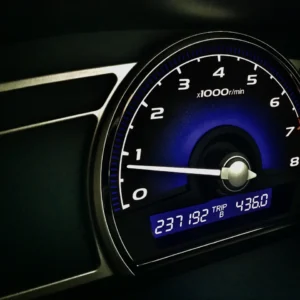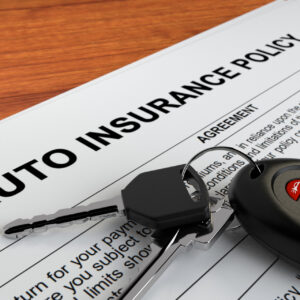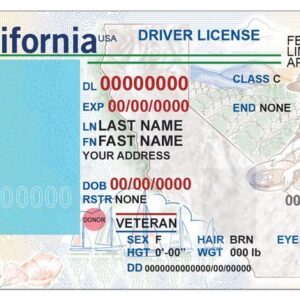Introduction
In the fast-paced world of trucking, maintaining compliance with the Department of Transportation (DOT) insurance requirements isn’t just a regulatory checkbox—it’s the backbone of risk management and financial stability for every fleet operator. As we move deeper into 2025, evolving regulations, higher coverage thresholds, and digital-filing mandates are reshaping how carriers secure and report their insurance. Whether you operate a small regional outfit or manage a nationwide fleet, understanding the DOT compliance insurance checklist is imperative to avoid costly penalties, legal exposure, and operational delays. In this guide, we’ll break down everything you need to know in 2025—from core coverages and endorsements to FMCSA portal filings—so you can keep your trucks rolling without a hitch.
What Are DOT Insurance Requirements for Trucking Fleets in 2025?
Trucking companies hauling freight across state lines must carry specific minimum insurance thresholds as mandated by the Federal Motor Carrier Safety Administration (FMCSA). These thresholds depend on the type of cargo and the fleet’s operating authority:
- $750,000 – Minimum primary liability insurance for non-hazardous freight.
- $1,000,000 – Minimum liability for oil transport.
- $5,000,000 – Minimum liability for Schedule I and II hazardous materials (e.g., explosives, radioactive materials).
These limits are non-negotiable: operating below them can trigger immediate shutdown orders, civil penalties, and hefty fines. Moreover, the FMCSA has signaled plans to revisit these thresholds for environmental-risk cargos, so staying attuned to updates is critical. (Agency Height)
Key Insurance Coverages Every Fleet Needs
Beyond the primary liability requirement, a robust insurance program for 2025 should include:
- MCS-90 Endorsement
- Federal endorsement guaranteeing that carriers can satisfy judgments against them up to policy limits.
- Legally required with every primary liability policy; failure to include it voids the policy for DOT purposes. (Agency Height)
- Cargo Insurance
- Covers loss or damage to freight—often required by shippers or brokers.
- Physical Damage (Comprehensive & Collision)
- Protects tractors and trailers against collision, theft, fire, and other hazards.
- General Liability
- Shields your business from third-party claims not arising from vehicle operations (e.g., slip-and-fall at terminals).
- Bobtail/Non-Truck-Use
- Covers liability when operating a truck without a trailer or not under dispatch.
- Uninsured/Underinsured Motorist (UM/UIM)
- Provides coverage when at-fault parties lack sufficient insurance.
- Workers’ Compensation
- Mandatory in most states for employee drivers.
Investing in these coverages not only safeguards your bottom line but also strengthens your DOT safety profile, potentially leading to lower insurance premiums over time. (Agency Height)
MCS-90 Endorsement Explained
The MCS-90 endorsement is the linchpin of DOT insurance compliance. It obligates insurers to pay out on valid liability claims up to policy limits even if the carrier’s own financial resources fall short. In practice:
- Insurer covers judgments arising from bodily injury or property damage.
- Carrier remains responsible for deductibles but cannot argue a lapse or cancellation to avoid payment.
Make sure every liability policy includes the MCS-90 on the declarations page. In 2025, FMCSA’s enhanced e-Filing system will flag policies missing this endorsement, leading to immediate non-compliance notices. (FMCSA)
Primary Liability Insurance: Coverage Limits Comparison
To illustrate core requirements, the table below compares 2025 primary liability limits by cargo type:
| Cargo Type | Minimum Limit | FMCSA Code |
|---|---|---|
| Non-Hazardous Freight | $750,000 | — |
| Oil | $1,000,000 | — |
| Hazardous Materials (Schedules I & II) | $5,000,000 | 49 CFR 387.9 |
Note: Higher limits may be contractually required by shippers or brokers. (Agency Height)
Cargo Insurance and Physical Damage
While primary liability protects third parties, cargo insurance and physical damage protect your assets:
- Cargo Insurance
- Typically written on an “all risk” basis, covering theft, damage, or loss in transit.
- Carriers choose between “named peril” or “all risk” forms depending on exposure.
- Physical Damage Coverage
- Comprehensive covers non-collision incidents (e.g., vandalism, natural disasters).
- Collision covers damage from vehicle impacts.
Carriers hauling high-value or sensitive loads often opt for higher cargo limits and agreed-value physical damage policies to ensure swift recovery. (Agency Height)
Filing & Reporting: Transition to the FMCSA Portal
As of December 2024, the FMCSA mandated a shift from the legacy Licensing & Insurance (L&I) portal to a new, more secure FMCSA Portal with multi-factor authentication (MFA). Key steps:
- Create a FMCSA Portal account via Login.gov.
- Obtain your Filer Number (e.g., 12345-00) and have your L&I credentials ready.
- Submit electronic proof of insurance (Form E) and BOC-3 filings through the e-Filer interface.
- Maintain continuous coverage—any lapse triggers immediate public posting of non-compliance.
This transition not only enhances data security but also speeds up processing times, ensuring that your insurance filings are visible to enforcement officers in real time. (FMCSA)
DOT Compliance Insurance Checklist
Below is your printable checklist to ensure every insurance requirement is met:
- Primary Liability Policy
- Coverage meets or exceeds FMCSA minimums by cargo type.
- Includes MCS-90 endorsement.
- Cargo Insurance
- Limits align with average freight value.
- Coverage form (“all risk” vs. “named peril”) documented.
- Physical Damage
- Comprehensive & collision limits set.
- Agreed-value endorsements where needed.
- General Liability
- Minimum $1 million per occurrence.
- Bobtail / Non-Truck-Use
- Policy in force when operating unattached.
- Uninsured/Underinsured Motorist
- Limits equal to or exceeding primary liability.
- Workers’ Compensation
- State-mandated coverage for all employees.
- BOC-3 Process Agent Filing
- Designated agents on file in all states of operation.
- Electronic Filing
- FMCSA Portal account active.
- Insurance filings updated within 30 days of any change.
Use this checklist quarterly or before any DOT audit to keep your fleet in top legal standing.
Implications & Insights for 2025
- Digital Oversight
- Real-time insurance data empowers FMCSA to target non-compliant carriers faster.
- Proactive e-filing reduces audit flags and out-of-service orders.
- Rising Premiums
- Higher liability thresholds, especially for hazmat, will push up base rates.
- Implementing safety technologies (telematics, camera systems) can offset costs via premium discounts.
- Risk Management Culture
- Integrating insurance compliance into safety programs fosters organizational buy-in.
- Clear documentation, transparent processes, and regular training minimize lapses.
- Contract Negotiations
- Shippers and brokers increasingly demand evidence of coverage exceeding FMCSA minima.
- Robust insurance portfolios can unlock premium freight opportunities.
By understanding these dynamics, fleet managers can turn compliance from a burdensome mandate into a competitive advantage.
Conclusion & Next Steps
Staying ahead of DOT insurance requirements in 2025 means more than just checking boxes—it’s about embedding risk management into your operational DNA. Use the checklist above as your roadmap, leverage the new FMCSA Portal for seamless filings, and consider strategic investments in safety technology to mitigate premium increases. Ready to fortify your fleet? Download our full DOT Compliance Insurance Checklist PDF and schedule a policy review with your broker today. Let 2025 be the year your fleet not only meets but exceeds DOT expectations—because on the road, compliance isn’t optional; it’s peace of mind.






